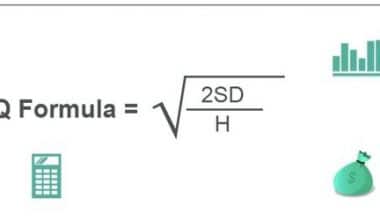A savings account is the place to seek if you need to save money for an unforeseen event. You can save money in a savings account, and the bank will pay you interest while it remains there safely. The bank or credit union of your choice can assist you in establishing one of these. If you’re thinking about creating a savings account, there are a few basics you should know. Read on to learn how savings accounts work, their features, and their benefits.
What Is Savings Account?
A savings account is a type of deposit account that banks and other financial institutions offer, typically paying interest on the deposits. Despite the low-interest rates offered by these accounts, they are a sensible place to save money for immediate expenses due to their security and dependability. Although there may be restrictions on how often you can withdraw money from a savings account, you can still use these accounts for various purposes. These include setting aside funds for emergencies, saving up for short-term goals like a car or vacation, or making your extra money work for you.
How Does Savings Account Work?
To open a savings account, you have the option of visiting a bank or credit union in person or accessing their online services. The process is similar to that of opening a checking account. You will need to open an account with the financial institution and deposit funds into it. After you have made a deposit, the funds in your savings account will start to accrue interest. The annual percentage yield (APY) of your savings account, the amount you deposit, and how long you keep your money in the account are just a few of the variables that affect how much you earn.
Furthermore, your bank has the option to accumulate interest on a daily, monthly, quarterly, or annual basis. The interest accrued will be added to your account at the end of each period of compounding. After that, the interest on your new account balance (including deposits and interest) will start to accumulate. The annual percentage yield (APY) of your savings account is subject to change as it is variable. You have the flexibility to withdraw money from your account at any time. However, it’s important to note that several institutions impose a limit on the number of withdrawals allowed from a savings account, typically up to six per month.
Features of Savings Account
Savings accounts offer several features that make them more appropriate for specific purposes. Here is a list of features of a savings account that can help you understand why it might be the perfect choice for you:
#1. Simple Financial Deals
One of the features of a savings account is that it can be used as a payment and receiving method. You can use your ATM or debit card or access your account online. This function cuts down on the need to rely on cash for every transaction, notably when it comes to the payment of bills.
#2. Payment of Bills
BillPay with savings accounts is just one of the convenient banking payment options available today. Utility customers, including those for power, water, and cellular phone recharges, can now make payments straight from their accounts.
#3. Mobile and Internet Banking
Your bank will normally provide Internet banking facilities with your savings account. As was previously noted, this facilitates dealings with less effort. Simply access your account online to make or receive a payment. Also, the bank has a mobile app that you can install on your smartphone to make banking easier and more accessible. You can get in touch with bank representatives via your mobile banking app if you have any questions, saving you a trip to the branch.
#4. Debit Card
Banks issue debit cards to customers with savings accounts, allowing them to withdraw cash from the account at an ATM and make purchases in-store or online.
#5. ATM facility
Whenever you feel the need to withdraw cash, you can do so from your savings account using an ATM. Most banks now have ATMs in cities and towns around the country. If there isn’t one nearby and you really need cash, though, you can always use the ATM of another financial institution.
#6. Savings Financing Rates
One of the features of savings accounts is that banks offer an interest rate with every savings account, which allows your unused funds to grow over time.
#7. The Cross-product Benefits
Certain banks provide cross-product benefits to their savings account holders. So, if you already have a savings account with the bank, you will receive unique advantages and offers if you choose to open another account with the same bank or if you wish to take advantage of any of their other products.
Benefits of Savings Account
The money you put away in a savings account is safer than cash kept at home, and it’s easy to access in case of an unexpected expense or big-ticket item down the road. Let’s discuss the benefits of establishing a savings account.
#1. Attaining Interest Is Possible
One of the benefits of a savings account is that you can earn interest on your savings amount if you deposit it into a savings account. Some checking accounts pay interest, while many do not. If you leave your money in a checking account that doesn’t pay interest, it will never increase.
#2. Automates the Process of Paying Your Payments on Time
Consider all of the monthly expenses you have: Monthly commitments like rent, computer and phone bills, utilities, and subscription services may change very little, if at all. Many banks allow clients to set up recurring payments directly from savings or checking accounts, meaning you may avoid potential late fees or missing payments. This is especially crucial for obligations like electricity payments that can seriously affect your life if you fail to pay them on time. When bills are paid automatically, you don’t have to worry as much about them.
#3. Your Funds Are Easily Accessible
Certificates of deposit (often abbreviated as “CDs”) are a type of savings account that typically prevents you from withdrawing your money before the account’s stated maturity date. However, the money in a savings account is usually easier to obtain. You can then use your debit card or write checks from your checking account.
One of the benefits of a savings account is that it can serve as a suitable emergency fund because of the flexibility it provides in terms of both saving and spending. Nevertheless, depending on the method and purpose of withdrawal, federal regulations may restrict the number of times in a given time period that you can access your savings account.
#4. It Can Help With Financial Emergencies
Having a savings account can be useful even if you don’t have a specific savings goal in mind. In the event of a financial emergency, such as the loss of a job or the breakdown of a vehicle, having a savings account can help make ends meet. Then, you can avoid the exorbitant interest rates and fees associated with using a credit card or other loan. And if you don’t have to tap into your savings for an unexpected expense, you can watch your funds grow interest-free.
Types of Savings Account
The various types of savings account include the following:
#1. Money Market Accounts
A money market account is a type of interest-bearing checking account that also provides the convenience of check writing. However, there are typically withdrawal frequency caps in place.
#2. Regular Savings Account
A standard savings account is one of the simplest types of savings accounts to open, and it’s available to virtually everybody. The bank may charge an annual fee to keep this account open, and the account holder will earn interest on the balance. Most banks require account users to sustain an average of a certain monthly balance in these accounts. A full Know Your Customer (KYC) check is required before one of these accounts may be opened.
#3. Certificates of Deposit
To save money using a Certificate of Deposit, you make a lump sum deposit and promise to leave it in the account until it “matures.” On the maturity date, the bank will return your principal along with any accrued interest.
#4. Instant Digital Savings Account
You can set up these electronic savings accounts in a matter of minutes through a smartphone app or internet banking service. The account will be suspended if the account holder does not complete KYC within the allotted time. Rs. caps the sum of all deposits into many quick digital savings accounts.
#5. Kids Savings Account
Children and young people (often under the age of 18 or 21, according to your state) are the only people eligible to open and contribute to these types of savings accounts. Some financial institutions allow teenagers to open savings accounts, although often only in conjunction with a parent or legal guardian. When a parent wants to put money or assets in a child’s name solely, they usually set up a custodial account.
Can You Just Open a Savings Account?
Various financial institutions have their own unique processes, but generally, you can request to open a savings account through online, in-branch, or phone channels. If there is a minimum deposit requirement, you will be required to deposit at least that amount or more.
Is a Savings Account Worth It?
Savings accounts held at federally insured banks and credit unions provide a high level of security for depositors, as they are insured up to $250,000 per account holder. This insurance coverage ensures that these financial institutions are a reliable and secure option for storing your money. Unlike most checking accounts, savings accounts have the advantage of earning interest, which allows your money to grow over time.
How Do You Close a Savings Account?
To close your account, contact your bank. Depending on the bank you are affiliated with, there are several options available to you for closing your account. You can choose to visit a local branch, contact customer service via phone, send a letter, or utilize the online platform to close your account.
What Is the Difference Between a Savings and a Checking Account?
The main advantage of having a checking account is that it allows you to easily access your funds for your day-to-day expenses. On the other hand, savings accounts allow you to save money for longer-term goals.
Can I Take Money Out of a Savings Account?
It is generally true that people own their own money. But it’s important to remember that a savings account is designed to prevent regular transactions and may put limits on the amount of money that can be taken out each month. Users may have to pay extra, have their account reclassified, or have their account closed completely if they go over the limits that have been set.
What Is a Good Amount to Keep in a Savings Account?
It is advisable to maintain a sufficient amount of money in your checking account to cover your monthly bills, along with a little extra for unexpected expenses. A good rule of thumb is to have enough funds to cover approximately one month’s worth of expenses. That amount is significantly lower than the recommended three to six months’ worth of expenses that should be kept in a savings account for emergencies.
Gat
References
- forbes.com
- investopedia.com
- creditkarma.com
- synchronybank.com
- What Are The Types Of Accounts In Nigeria?
- HOW MUCH SHOULD YOU SAVE A MONTH?: Do I Even Have to Save?
- WHAT IS ONLINE BANKING: Features, Types & Best Services
- ATM BUSINESS: Complete Guide & Easy Steps
- HOW TO START AN ATM BUSINESS IN 2023 : The Ultimate Guide
- Easiest Credit Cards to Get Approved In 2023






